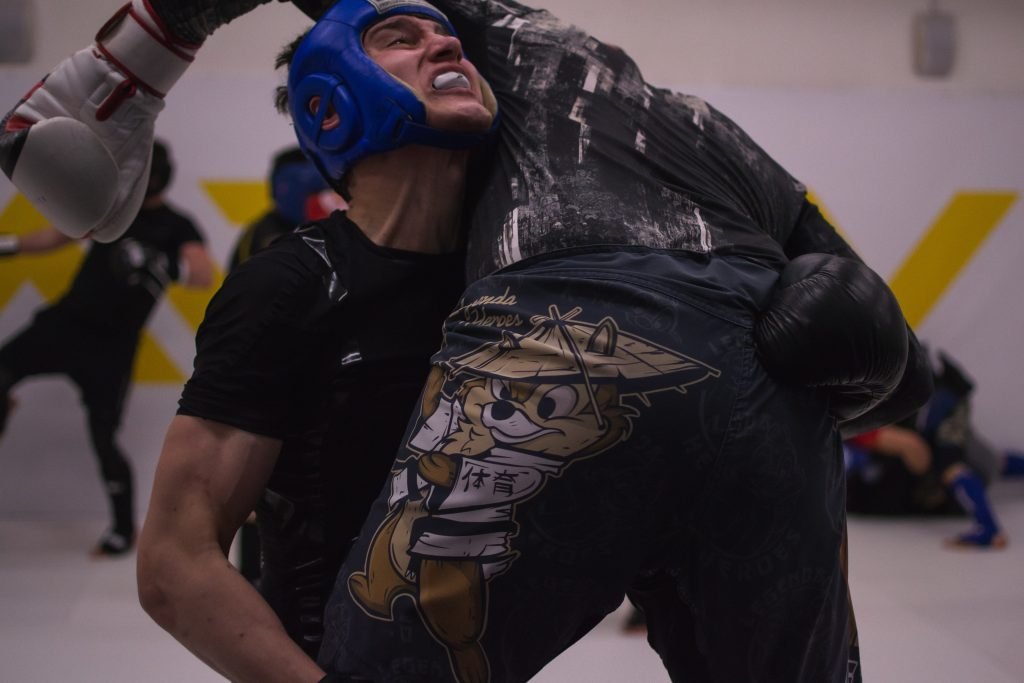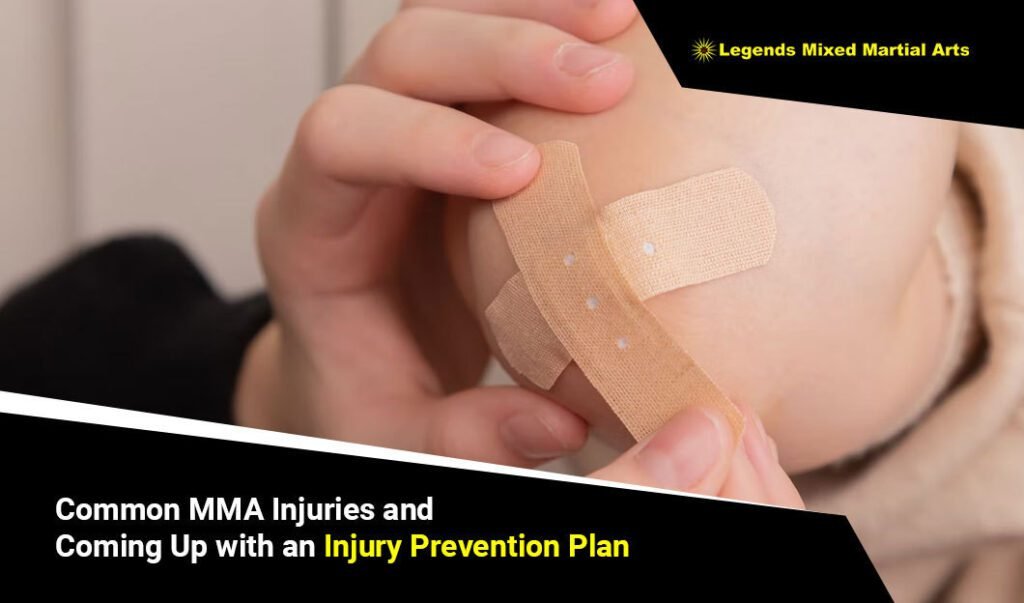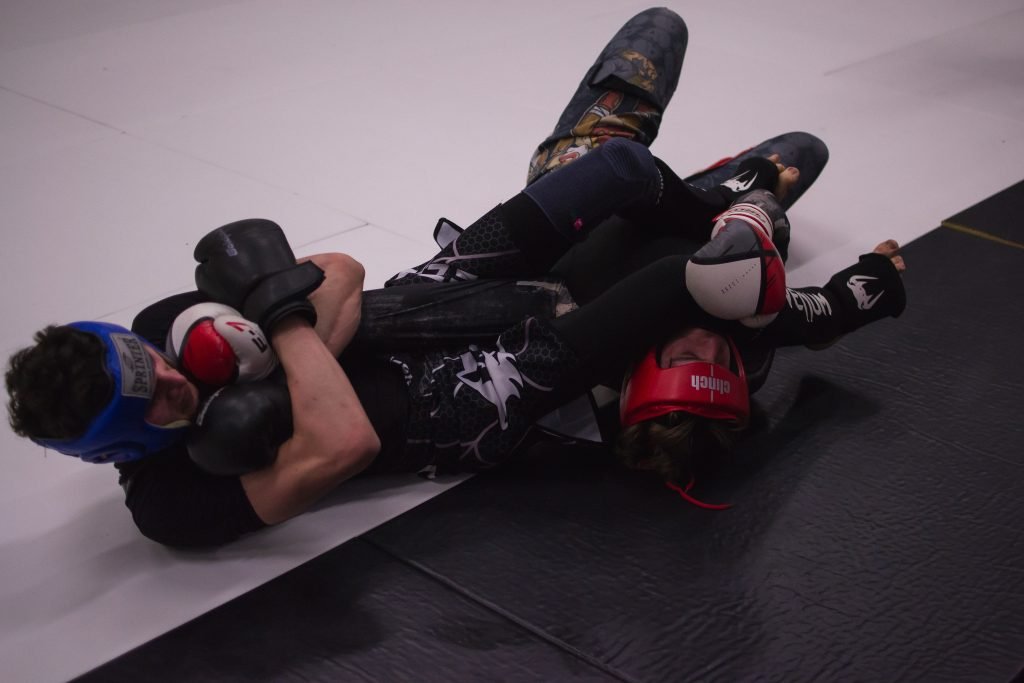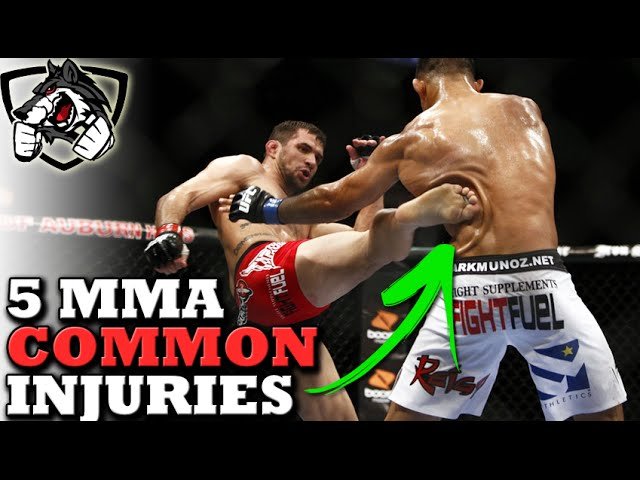Are you an MMA enthusiast looking to level up your training? In the world of mixed martial arts, overuse injuries can be a common setback. Whether you’re a professional athlete or a recreational practitioner, it’s crucial to take proactive steps to prevent these injuries. In this article, we will explore some practical tips and techniques to help you avoid overuse injuries in your MMA training. By incorporating these strategies into your routine, you can optimize your performance and stay in the game for the long haul. So, let’s jump right in and explore the world of injury prevention in MMA training!
Warm-up and Cool-down
Importance of warm-up
Warm-up is an essential part of any MMA training routine. It prepares your body for the upcoming physical demands by increasing the circulation of blood and oxygen to the muscles. By raising your body temperature and heart rate, a proper warm-up helps to reduce the risk of injury during training or competition. It also helps to mentally focus and prepare for the intense physical activities that lie ahead.
Effective warm-up exercises
To ensure an effective warm-up, it is crucial to incorporate dynamic movements that mimic the actions you will be performing during your training or fight. Some effective warm-up exercises for MMA training include jogging or jumping rope to increase heart rate, shadow boxing to activate the upper body muscles, and dynamic stretches for improved flexibility and mobility. It is essential to spend at least 10-15 minutes on your warm-up to adequately prepare your body for the training session.
Benefits of cool-down
Cooling down after an intense MMA training session is just as important as warming up. Cool-down plays a crucial role in gradually bringing your heart rate and body temperature back to normal, preventing dizziness, and promoting effective recovery. It also aids in flushing out waste products such as lactic acid from the muscles, reducing muscle soreness, and decreasing the chances of post-training muscle cramps.
Recommended cool-down techniques
To cool down effectively, you can perform low-intensity exercises such as gentle jogging or walking to gradually lower your heart rate. Incorporating static stretching exercises can also help promote muscle recovery and increase flexibility. Additionally, using self-myofascial release tools like foam rollers or massage balls can target specific muscle groups to alleviate tension and aid in the recovery process. Spending at least 10-15 minutes on your cool-down will help optimize your recovery and prepare your body for the next training session.
Proper Technique and Form
Importance of proper technique
Proper technique and form are fundamental in MMA training to enhance performance and prevent injuries. By mastering the correct techniques, you maximize your power, speed, and efficiency while minimizing the strain on your joints and muscles. Proper technique also ensures that you execute your moves accurately, reducing the risk of overextension or misalignment that can lead to injuries. Developing good technique from the beginning and continually refining it is crucial for long-term success in MMA.
Mastering fundamental movements
To achieve proper technique, it is essential to focus on mastering the fundamental movements of MMA. These include striking techniques, grappling maneuvers, takedowns, and defensive tactics. By starting with the basics and gradually progressing to more advanced techniques, you develop a solid foundation of skills and improve your body mechanics. Practice and repetition are key to refining your technique and ingraining it into your muscle memory.
Working with a skilled coach or trainer
One of the most effective ways to learn and refine proper technique in MMA is to work with a skilled coach or trainer. They have the knowledge and experience to guide you through the intricacies of each technique, helping you correct any errors and providing valuable feedback. A coach can also create personalized training programs that focus on improving your weaknesses and honing your strengths. Their expertise and guidance will significantly contribute to your overall skill development and injury prevention.
Regular video analysis for form correction
In addition to working with a coach or trainer, regular video analysis can be a useful tool for form correction in MMA. Recording your training sessions or sparring matches allows you to review and analyze your technique objectively. By identifying any deviations from proper form, you can make the necessary adjustments and work on refining your technique. Video analysis also provides valuable insights for coaches and trainers, enabling them to provide targeted feedback and further enhance your performance.

Gradual Progression
Avoiding rapid increases in intensity
When it comes to MMA training, gradual progression is key to preventing overuse injuries. It is important to avoid sudden and drastic increases in intensity, such as significantly increasing the duration or frequency of your training sessions. Rapid increases in intensity can place excessive stress on your muscles, tendons, and ligaments, leading to overuse injuries like strains or tendonitis. Instead, focus on progressive overload, gradually increasing the demands on your body over time to allow for adaptation and minimize the risk of injuries.
Implementing gradual increase in training volume
In addition to intensity, it is equally important to implement a gradual increase in training volume. This refers to the total amount of training you undertake, including the number of sessions, duration of each session, and the overall workload. By steadily increasing your training volume, you allow your body to adapt to the increased demands and minimize the risk of overuse injuries. It is crucial to listen to your body and avoid pushing beyond your limits too quickly.
Periodization techniques for structured progression
Periodization is a systematic approach to training that involves dividing your training into specific phases, each with its own goals and levels of intensity. By incorporating periodization techniques, you can structure your training in a way that optimizes performance and minimizes the risk of overuse injuries. This involves alternating periods of higher intensity and lower intensity training, allowing for adequate recovery and adaptation. Working with a qualified coach or trainer can help you design a periodized training program tailored to your specific needs and goals.
Listening to your body for signs of overuse
Perhaps the most important aspect of gradual progression is listening to your body and recognizing the signs of overuse. Pushing through pain or discomfort can lead to serious injuries and prolonged recovery time. If you experience persistent pain, swelling, or any other signs of overuse, it is crucial to modify your training intensity or volume accordingly. Prioritizing rest and recovery when needed allows your body to heal and adapt, reducing the risk of long-term injuries.
Rest and Recovery
Understanding the importance of rest days
Rest days are an integral part of any MMA training program and should never be overlooked. While it may be tempting to train relentlessly, giving your body regular periods of rest is crucial for optimal performance and injury prevention. Rest days allow your muscles to repair and rebuild themselves, replenish energy stores, and reduce the risk of accumulated fatigue. It is during periods of rest that your body adapts and becomes stronger, ultimately improving your overall performance.
Incorporating active recovery activities
On rest days, incorporating active recovery activities can enhance the recovery process without placing excessive stress on your body. Low-intensity exercises such as swimming, cycling, or light yoga can help increase blood flow and promote muscle recovery. Engaging in these activities on rest days can expedite the removal of metabolic waste products and reduce muscle soreness, allowing for a quicker recovery.
Adequate sleep for optimal recovery
Sleep is a crucial component of the rest and recovery process. It is during sleep that your body undergoes essential repairs and regeneration. Aim for a consistent sleep schedule and prioritize getting an adequate amount of sleep each night. The exact amount of sleep needed varies from person to person, but most adults require between 7-9 hours of quality sleep per night. By prioritizing sleep, you optimize your body’s recovery and set yourself up for success in your MMA training.
Utilizing restorative techniques like massage or foam rolling
In addition to rest and sleep, incorporating restorative techniques like massage or foam rolling can further enhance your recovery. Massage helps increase blood flow, loosen tight muscles, and reduce muscle tension. Foam rolling, also known as self-myofascial release, helps break up knots and adhesions in the muscles, improving flexibility and promoting recovery. These techniques can be used as part of your cooldown routine or as standalone practices on rest days to aid in the recovery process.

Balanced Training
Avoiding excessive focus on specific techniques
While it is important to develop proficiency in specific techniques, avoiding excessive focus on one technique to the detriment of others is crucial for injury prevention. By diversifying your training and incorporating a variety of techniques, you ensure balanced development and minimize the risk of overuse injuries. Training different techniques helps distribute the load across various muscle groups, reducing strain on any one area of the body.
Incorporating cross-training and variety
Cross-training involves engaging in activities outside of MMA that complement and supplement your training. By incorporating cross-training, such as strength training, cardiovascular exercises, or flexibility training, you develop a well-rounded fitness base that supports your MMA performance. Variety in your training not only keeps things interesting but also helps prevent overuse injuries by reducing the repetitive strain on specific muscles or joints.
Balancing between strength, conditioning, and skill training
Balanced training requires incorporating strength, conditioning, and skill training into your routine. Strength training helps develop the necessary muscle strength and endurance to withstand the demands of MMA. Conditioning exercises, such as interval training or circuits, improve cardiovascular fitness and muscular endurance. Skill training, which focuses on mastering techniques and strategies, is essential for success in MMA. Striking a balance between these three components ensures overall development and reduces the risk of imbalances or overuse injuries.
Implementing structured rest and recovery periods
Structured rest and recovery periods are essential for maintaining balance and preventing overuse injuries. Building rest days into your training schedule allows for proper recovery and adaptation. Additionally, implementing deload weeks – periods of reduced training volume or intensity – can help prevent accumulated fatigue and provide a respite for your body. Building a structured training program that incorporates rest and recovery periods ensures you are giving your body the necessary time to heal and grow.
Listen to Your Body
Recognizing signs of overuse and overtraining
Listening to your body is of utmost importance to prevent overuse injuries and overtraining syndrome. Overuse injuries occur when there is repetitive stress on a particular body part, leading to tissue damage and inflammation. Symptoms of overuse injuries may include localized pain, swelling, or decreased range of motion. Overtraining syndrome, on the other hand, is a result of excessive training without adequate rest and recovery. Signs of overtraining include persistent fatigue, decreased performance, mood disturbances, and an increased susceptibility to illness.
Paying attention to persistent pain or discomfort
Persistent pain or discomfort should never be ignored. While some soreness and discomfort after training are normal, persistent pain can be a sign of an underlying issue that needs attention. If you experience pain that lasts for more than a few days or worsens with activity, it is essential to consult a healthcare professional. Ignoring persistent pain can lead to further damage and potentially long-term consequences.
Modifying training intensity or volume when necessary
When your body is signaling that it needs a break, it is crucial to modify your training intensity or volume accordingly. This may mean reducing the weight or repetitions during strength training, shortening the duration of your training sessions, or taking additional rest days. It is important to listen to your body’s cues and make adjustments to prevent overuse injuries and promote proper recovery. By being adaptable and responding to your body’s needs, you maintain a safer and more sustainable approach to training.
Seeking professional medical advice when needed
If you are experiencing persistent pain, discomfort, or are unsure about the severity of an injury, it is always a wise decision to seek professional medical advice. Healthcare professionals with experience in sports medicine or orthopedics can assess your condition, offer a proper diagnosis, and provide appropriate treatment or rehabilitation strategies. Early intervention and proper care can significantly accelerate the healing process and minimize the risk of long-term complications.

Proper Nutrition and Hydration
Importance of a well-balanced diet
Proper nutrition is crucial for optimal performance, injury prevention, and overall well-being in MMA training. A well-balanced diet provides your body with the necessary nutrients, vitamins, and minerals to support muscle recovery, energy production, and immune function. It is essential to consume a variety of whole foods, including lean proteins, carbohydrates, healthy fats, fruits, and vegetables, to meet your nutritional needs. A registered dietitian or nutritionist specializing in sports nutrition can help design a personalized meal plan that suits your training needs and goals.
Adequate protein intake for muscle recovery
Protein plays a vital role in muscle repair and recovery. Adequate protein intake is essential for repairing damaged muscle fibers and promoting muscle growth. Aim to consume high-quality protein sources, such as lean meats, poultry, fish, eggs, dairy products, and plant-based proteins like legumes or tofu. The exact protein requirements vary depending on factors such as body weight, training intensity, and goals, but generally, athletes require more protein than sedentary individuals. Consulting a sports nutrition professional can ensure you are meeting your individual protein needs.
Hydration strategies before, during, and after training
Proper hydration is crucial for optimal performance and injury prevention during MMA training. Dehydration can impair cognitive function, decrease muscle strength and endurance, and increase the risk of heat-related illnesses. It is important to hydrate before, during, and after training sessions to maintain an optimal fluid balance. Drinking water or sports beverages that contain electrolytes, especially during intense or prolonged training sessions, can help replace lost fluids, electrolytes, and minimize the risk of dehydration.
Supplementation if necessary under professional guidance
While a well-balanced diet should provide most of the necessary nutrients for MMA training, some individuals may benefit from certain supplements under professional guidance. Dietary supplements should not replace a healthy diet but can be used to complement it. Supplements such as protein powders, branched-chain amino acids (BCAAs), or fish oil may be beneficial for muscle recovery and performance. However, it is important to consult a healthcare professional or registered dietitian before starting any supplementation regimen to ensure safety and optimal usage.
Injury Prevention Exercises
Targeted exercises for injury-prone areas
Injury prevention exercises should target areas that are commonly prone to injury in MMA training. These areas may include the knees, shoulders, lower back, and wrists. Strengthening exercises that focus on the surrounding muscles of these joints, such as glute bridges, shoulder external rotations, or core stabilization exercises, can help improve joint stability and reduce the risk of injury. Including these exercises as part of your regular training routine can prehabilitate these areas, making them more resilient to the demands of MMA.
Strengthening muscles surrounding joints
Strong muscles around the joints provide stability and protection against injuries. By incorporating exercises that target the muscles surrounding your joints, you can improve joint function, reduce the risk of imbalances, and prevent overuse injuries. For example, exercises like squats, lunges, or deadlifts help strengthen the muscles around the knees and hips, while push-ups or bench presses engage the muscles around the shoulders and chest. It is important to focus on maintaining proper form and executing these exercises with controlled movements for maximum benefit.
Improving flexibility and mobility
Flexibility and mobility are crucial components of injury prevention in MMA training. Improved flexibility allows for a greater range of motion, reducing the risk of strains or tears. Mobility exercises aim to enhance joint mobility and stability, enabling efficient movement patterns and reducing the risk of compensation injuries. Incorporating exercises such as dynamic stretching, yoga, or mobility drills specific to MMA movements can help improve your flexibility and mobility, enhancing your overall performance and reducing the risk of injury.
Implementing prehabilitation exercises
Prehabilitation, or prehab, refers to exercises that proactively prevent injuries before they occur. These exercises target weak or imbalanced areas of the body, building strength and stability to minimize the risk of future injury. Prehab exercises can include a combination of strength training, flexibility, and mobility exercises tailored to your individual needs. By regularly implementing prehabilitation exercises into your training routine, you can address potential imbalances or weaknesses, optimizing your body’s resilience and minimizing the risk of injuries.

Proper Equipment and Gear
Using appropriate protective gear
In MMA training, using appropriate protective gear is essential for injury prevention. Protective gear may include mouthguards, hand wraps, groin protectors, shin guards, and headgear. These items provide an additional layer of protection, reducing the impact of strikes and preventing unnecessary injuries. It is important to invest in quality protective gear that fits properly and is designed specifically for MMA training.
Investing in quality training equipment
Investing in quality training equipment is another important aspect of injury prevention in MMA. Whether it is gloves, training bags, mats, or training dummies, having reliable and durable equipment ensures safety and optimal training conditions. Low-quality or worn-out equipment can increase the risk of injury due to inadequate support or potential malfunction. Regularly inspecting your training equipment and replacing any worn-out or damaged items is necessary to maintain a safe training environment.
Regularly inspecting and replacing worn-out gear
To ensure optimal safety and performance, it is important to regularly inspect and replace worn-out gear. Constant use and wear can diminish the protective capabilities of equipment, compromising its ability to prevent injuries. Inspect your gear for any signs of damage, such as tears, loose stitching, or significant wear, and replace it promptly when necessary. By keeping your gear in good condition, you minimize the risk of injury and maintain a safe training environment.
Ensuring proper fit for safety and performance
Proper fit is crucial when it comes to equipment and gear in MMA training. Ill-fitting gear can restrict movement, increase the risk of injury, and negatively impact performance. Ensure that your protective gear, gloves, and training equipment fit properly and provide adequate support. For example, gloves should be snug but not too tight, allowing for proper hand movement and protection. Properly fitting gear enhances safety, comfort, and enables you to perform at your best while minimizing the risk of injury.
Professional Guidance and Support
Working with experienced coaches and trainers
Seeking professional guidance and working with experienced coaches and trainers is invaluable in MMA training. Coaches and trainers bring their expertise, knowledge, and experience to guide you throughout your training journey. They can provide proper technique instruction, tailor training programs to your individual needs, and offer guidance on injury prevention. Experienced coaches and trainers can also provide motivation, accountability, and support, helping you stay on track and achieve your goals safely and effectively.
Regular check-ups and screenings
Regular check-ups and screenings can play a crucial role in injury prevention. By seeking medical clearance and regularly monitoring your health status, you can identify any underlying health conditions or risk factors that may increase the likelihood of injuries. Regular screenings may include fitness assessments, strength and flexibility tests, or specific medical evaluations depending on your needs. These check-ups and screenings provide an opportunity to discuss any concerns or modifications to your training program with healthcare professionals.
Prioritizing recovery and injury prevention
To prevent overuse injuries and ensure long-term success in MMA training, it is essential to prioritize recovery and injury prevention. Recovery should be viewed as an integral part of your training program, not as an afterthought. This includes incorporating rest days, prioritizing sleep, engaging in recovery activities, and practicing proper nutrition and hydration. By prioritizing recovery and injury prevention, you optimize your body’s ability to adapt, minimize the risk of overuse injuries, and maintain consistent progress in your training.
Building a support network within the MMA community
Building a support network within the MMA community can provide invaluable support, motivation, and accountability. Surrounding yourself with like-minded individuals who share similar goals and challenges can foster a sense of camaraderie and support. Whether it is training partners, teammates, or fellow MMA enthusiasts, having a support network can provide encouragement during tough times, share experiences and knowledge, and offer different perspectives on injury prevention strategies. Embracing the sense of community within MMA can enhance your training journey and help prevent injuries.


